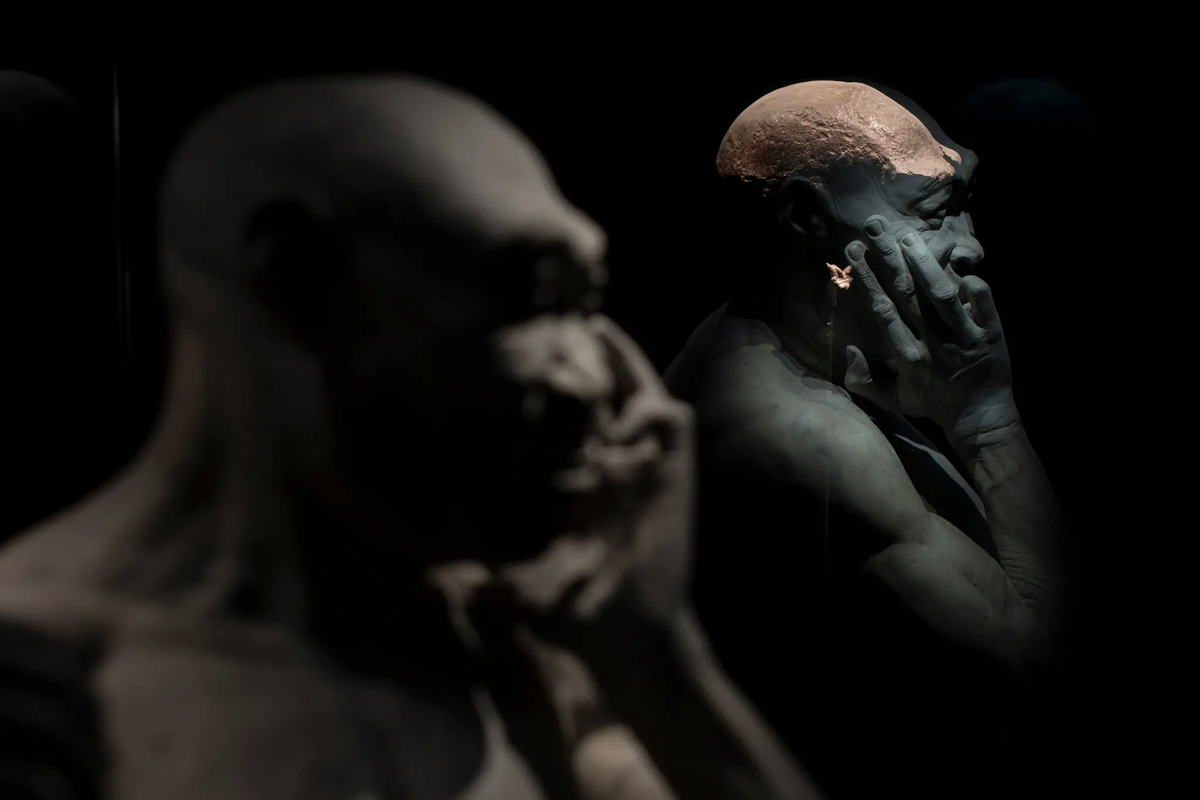Dispute over Java man: Who owns ancient history?

The Naturalis Biodiversity Center, a popular natural history museum in the Netherlands, owns about 40,000 prehistoric objects collected in the 19th century by the Dutch physician Eugène Dubois from the banks of the Bengawan Solo, a river in Java, and at other digs in Indonesia. The highlight is a femur and skull fragment from Java Man, the first known specimen of Homo erectus, long considered a “missing link” between humans and apes. But the remains are not just a museum centerpiece, they are also the focal point of an international restitution battle: Indonesia has said it wants the femur and skull fragment back. But even that is just the beginning — ultimately, it says it wants the entire Dubois Collection returned. Which raises the question: Who owns prehistory?
Asteroid that created earth's largest crater was much bigger than some thought
About two billion years ago, an asteroid hurtled toward Earth, crashing into the planet near present-day Johannesburg, creating the largest crater we know of. Based on the size of the crater, scientists previously estimated the asteroid was about 15 kilometers (approximately 9.3 miles) wide, travelling at a velocity of 15 kilometers per second. New research, however, indicates the asteroid may have been much bigger—almost twice as large. New geological evidence shows that the crater is larger than previously thought, and based on those measurements, the asteroid was likely about 20 to 25 kilometers wide, and travelled at a velocity of 15 to 20 kilometers per second. That's larger than the asteroid that killed off the dinosaurs 66 million years ago.

The Velveteen Rabbit was always more than just a children's book
In the children's story The Velveteen Rabbit, a little boy receives a stuffed rabbit for Christmas. From a wise old toy, the rabbit learns that when a child loves you for a long time, you become Real. But when the boy gets sick, the doctor orders the rabbit to be burned. The rabbit cries a tear, and from the tear grows a flower, and out of the flower steps a fairy, who transforms him into a real rabbit. Children are aware that the lives of their toys are imaginary, the author believed – what they lack are the barriers that will be erected in adolescence between imagined realities and material ones. The story is also seen by some as an elegy for the author's daughter, who perhaps grew up too fast.

The man who invented standup comedy, over four hundred years ago
It's the summer of 1599, and a stand-up artist has just come onstage in London at the Curtain. He paces downstage, an arresting presence, visibly atypical, numinously strange. The crowd looking on knows already that this bristling figure isn’t going to be like the other clowns they’ve seen on the Curtain stage. He doesn’t do jigs or pratfalls. He doesn’t smile. He doesn’t offer winks or reassurances. And he doesn’t intend to make this easy, for himself or anyone else. But these 2,000 paying customers must also know that Robert Armin, a.k.a. Snuff the Clown, has something else to offer. They are here, after all, for him.

What it’s like to act in a Call of Duty game
For cinematic scenes in big titles such as Call of Duty, the Last of Us and Death Stranding, actors now wear full performance-capture body suits – sort of like Lycra body gloves – which record their every movement. “I’ve been asked to play more than one general,” says actor Glenn Moreshower, who plays hard guy military chief, General Shepard, “but this is the only time I’ve done it wearing a leotard.” According to him, however, the biggest issue is the high-definition camera he has to wear at all times, which is fixed to a tripod on every actor’s helmet, pointing into their faces to capture every micro-expression.

A scientist talks about his research into shark attacks
Gavin Naylor talks about his work creating a national database of shark attacks: "The impetus for the file dates back to the Second World War. In 1945, Japanese torpedoes hit the USS Indianapolis as it was cruising toward the Philippines, sending about 800 sailors into the water, where several dozen, and possibly as many as 100, were eaten by sharks. Sailors were as frightened of sharks as they were of being torpedoed. So the US Navy started funding research for potential shark repellents such as pardaxin, a substance a fish in the Red Sea emits, which seems to protect it from sharks. Eventually, scientists realized they needed to better understand what situations cause sharks to bite humans."

Why do zebras have those colorful stripes?
Why do zebras have such striking, conspicuous, black & white stripes? This >150-yr-old mystery, puzzled over by Darwin & many others before him, still isn’t solved. But one hypothesis is in the lead. Hint: it's not predator confusion, thermoregulation, or camouflage (1/9) pic.twitter.com/Q1UEMwztaT
— Kaia Tombak (@kaiatombak) November 4, 2022



